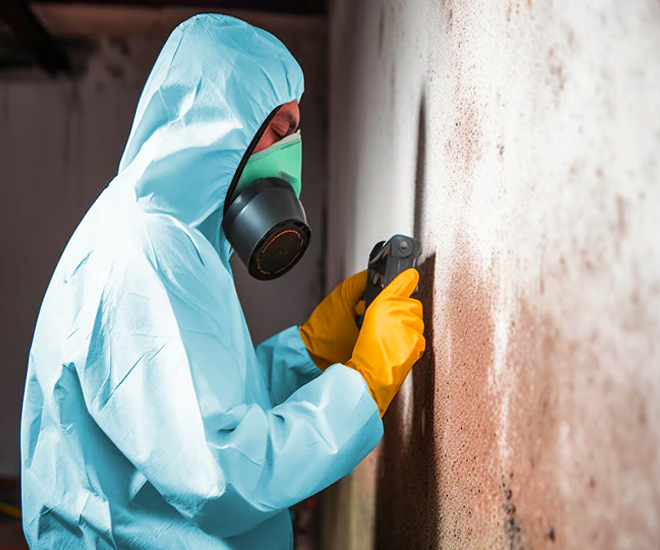Crafting an In-depth Post Mold Remediation Report
Crafting an In-depth Post Mold Remediation Report
Blog Article
Professional Tips for Article Mold Removal Success
In the realm of mold remediation, efficiently getting rid of mold and mildew is just half the fight; the real difficulty lies in avoiding its reappearance. By sticking to expert pointers and ideal techniques, people can protect their areas versus mold and mildew revival and maintain a healthy and balanced interior environment.
Screen Humidity Degrees Regularly
After completing mold and mildew removal procedures, maintaining ideal humidity levels is crucial to avoid mold and mildew re-growth and make certain a healthy indoor environment. High moisture levels over 60% develop a conducive setting for mold to flourish, making regular monitoring an aggressive step to stop any kind of future mold problems.
Additionally, developing a regular timetable for moisture checks, specifically in risky areas such as cooking areas, washrooms, and basements, is an aggressive method to mold prevention. By constantly checking humidity levels, residential or commercial property owners can properly reduce the threat of mold reoccurrence and keep a healthy and balanced indoor environment post-remediation.
Conduct Thorough Inspections Post-Remediation
Following the conclusion of mold and mildew removal procedures, it is imperative to carry out thorough inspections to verify the performance of the remediation procedure. These post-remediation inspections are crucial in ensuring that the mold issue has been successfully dealt with and that there is no recurrence or staying mold and mildew development. Examinations need to be executed by qualified specialists who have experience in recognizing mold and mildew and assessing indoor air top quality.
Throughout these evaluations, different methods such as aesthetic evaluations, air sampling, and surface sampling may be used to thoroughly review the remediated locations. Aesthetic evaluations involve a comprehensive examination of the facilities to look for any noticeable signs of mold growth or water damages. Air sampling assists in establishing the air-borne mold spore degrees, while surface area sampling can detect mold and mildew particles on surfaces.
Implement Correct Air Flow Strategies
After making certain the effectiveness of the mold and mildew removal procedure via complete examinations, the next crucial action is to concentrate on carrying out proper ventilation techniques. Sufficient air flow is essential in avoiding mold and mildew reoccurrence by managing dampness levels and promoting air blood circulation.
Correct ventilation not just aids in protecting against mold development however also adds to the total health and comfort of occupants. By guaranteeing adequate ventilation throughout the home, you can minimize the risk of mold and mildew regrowth and develop a healthier living you could look here atmosphere.

Use Mold-Resistant Materials for Services
To boost the long-lasting performance of mold and mildew remediation initiatives, including mold-resistant products for fixings is essential in alleviating the risk of future mold growth. Mold-resistant products are designed to withstand dampness and prevent mold and mildew growth, making them an essential choice for areas prone to wetness and moisture. When repairing locations impacted by mold and mildew, using products such as mold-resistant drywall, mold-resistant paints, and mold-resistant caulking can aid stop mold and mildew recurrence.
Mold-resistant drywall is a superb option to typical drywall in locations like cellars and restrooms where wetness levels are higher. When revealed to damp conditions, this type of drywall has a special finish that resists mold growth even. Additionally, making use of mold-resistant paints including antimicrobial agents can additionally prevent mold advancement on wall surfaces and ceilings.
In locations where wetness is common, such as restrooms and kitchen areas, utilizing mold-resistant caulking around tubs, sinks, and home windows can assist seal out water and stop mold from holding in my site fractures and crevices. By purchasing these mold-resistant products throughout repairs post-remediation, you can substantially decrease the probability of future mold concerns and maintain a much healthier indoor atmosphere.
Maintain Sanitation and Address Water Issues
Ensuring tidiness and immediately attending to water issues are fundamental methods to promote in protecting indoor areas from mold and mildew reinfestation. After mold removal, it is essential to keep a clean atmosphere to avoid the regrowth of mold (Post Mold remediation cleaning). Routine cleansing, dusting, and vacuuming can help eliminate any type of remaining mold spores and prevent them from proliferating and settling. Additionally, keeping interior spaces completely dry and addressing any water concerns immediately is important in mold avoidance. Leaks, water breach, or high moisture levels can develop the excellent breeding ground for mold, so it is essential to fix any type of water-related issues quickly.
To keep tidiness, think about using HEPA filters in vacuums and air purifiers to trap mold spores and avoid their blood circulation airborne. Guaranteeing appropriate air flow in areas susceptible to moisture build-up, such as washrooms and kitchens, can aid keep humidity levels in check. By remaining alert regarding cleanliness and dealing with water issues immediately, you can successfully avoid mold reinfestation and preserve a healthy and balanced indoor setting.
Verdict

In the realm of mold removal, effectively eliminating mold is just half the battle; the true difficulty exists in stopping its reappearance. After finishing mold remediation treatments, preserving optimum humidity levels is important to avoid mold re-growth and ensure a healthy and balanced interior atmosphere. High moisture degrees above 60% create a conducive environment description for mold and mildew to flourish, making regular keeping track of an aggressive action to protect against any future mold problems.
To boost the long-lasting performance of mold removal efforts, including mold-resistant materials for repair work is vital in mitigating the danger of future mold and mildew growth. After mold remediation, it is crucial to maintain a tidy environment to protect against the regrowth of mold.
Report this page